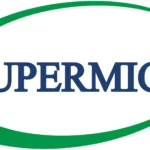At AI Field Day, experts from Solidigm and Supermicro illuminated the critical role of high-performance storage in ensuring the success of Generative AI, which demands instant, uninterrupted access to massive datasets. Efficient storage solutions are paramount to prevent downtime, which can lead to significant loss in both productivity and financial terms. Their discussion underlined the importance of structuring and cataloging data for future use, emphasizing that optimized storage systems with high IOPS (Input/Output Operations Per Second) are essential for Generative AI’s accelerating growth and the reliable generation of actionable insights. Read more in this article by Jeff Powers for Gestalt IT, sponsored by Solidigm.
Storage for AI: Data Professional Overview
The use of the term ‘data management’ is subject to varying interpretations between data professionals and storage providers, leading to some confusion when discussing the scope of services. Solidigm highlights the unique storage requirements for AI, as Karen Lopez wrote, emphasizing that AI servers need significantly more capacity and have specific data demands across different stages: Data ingest, Data prep, Training, Checkpointing, and Inference. As data professionals, our understanding of these distinct data workloads enables us to contribute valuably to discussions on data architecture, especially in collaboration with companies like Supermicro, who integrate these storage solutions into their AI server offerings.
Why Storage Matters for AI – Solidigm
During AI Field Day 4, Solidigm, alongside partner Supermicro, spotlighted the pivotal role of storage in AI, as discussed by Gina Rosenthal. Ace Stryker of Solidigm emphasized the need to shift from HDDs to solid-state drives, aligning with the trends of chip spending growth and the demand for higher storage in AI servers. Supermicro’s Wendell Wenjen and Paul McLeod further discussed the integration with WEKA and the importance of storage in AIOps, indicating that a substantial portion of Supermicro’s revenue is derived from AI-related ventures.
Supermicro
Supermicro is a global technology leader committed to delivering first-to-market innovation for Enterprise, Cloud, AI, Metaverse, and 5G Telco/Edge IT Infrastructure. We are a Rack-Scale Total IT Solutions provider that designs and builds an environmentally-friendly and energy-saving portfolio of servers, storage systems, switches, software, along with global support services.
Composing a Harmonized Infrastructure With Solidigm and Supermicro
As data center workloads become more intensive, storage struggles to keep pace with CPU and memory in terms of speed and density increases. Composable infrastructure, like that offered by Solidigm, serves as an answer by presenting resources as and when they are needed, specifically the D5-P5430 Solidigm data center SSD. It’s a storage device that communicates via NVMe over PCIe gen 4.0 and is available in a U.2, E1.S, and E3.S form factor, with Solidigm using Enterprise Datacenter Standard Form Factor (EDSFF), a design that provides better density options than standard drive form factors while also being front-loading and hot-pluggable. This sponsored article by Andy Banta looks deeper at the Solidigm P5430 SSD family.
Solidigm and Supermicro Help Organizations Achieve Three Goals of Infrastructure Sustainability
Solidigm and Supermicro have collaborated on E3.S EDSFF SSDs to provide high-density NVMe QLC SSDs. Solidigm’s D5-P5430, which uses E3.S, EDSFF, and U.2 form factors, provides up to 30.72 TB per single SSD. The collaboration helps enterprises like hyperscalers and xSPs that need capacity-oriented storage to achieve three sustainability objectives, which include scaling storage density and reducing energy consumption. This sponsored article by Max Mortillaro explores the use case for the new P5430 SSD family.








